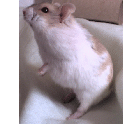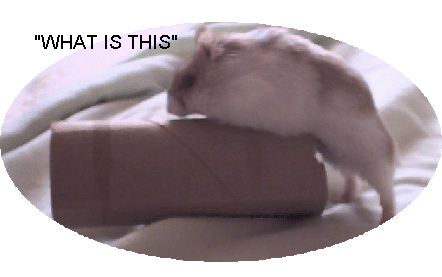DWARF HAMSTERS
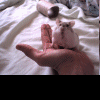

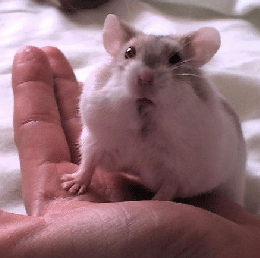
THE RUSSIAN HAMSTER
This animal is usually known as a dwarf hamster, growing up to 8 cms in length. These hamsters like to live together - either two of the same sex or as a pair. A pair can produce a litter of babies every eighteen days, so think carefully before deciding on a pair. The babies are looked after by both parents. Although they are also born blind and naked they develop faster than Syrian babies and are fully weaned by three weeks. There are two species of Russian hamsters commonly kept as pets. The more common and generally larger animal is the Campbell, and the other is the Winter White. Both species have several colour variations.
GENERAL CARE
If you intend keeping the 'Dwarf' varieties in a wire top cage the bars must not be more than 6 mm apart as these animals can get through very small gaps. Glass or plastic aquariums can also be used. Sawdust (or wood shavings) should be spread on the base of the cage and a handful of bedding put in a corner. The bedding can be of the shredded paper variety. It is recommended that a water bottle be used, with the spout fitted to the cage at the right height for your hamster to reach. (A dish containing water is easily fooled). About an tea-spoon of dry 'Hamster Mix' per day should be given and 'greens' introduced very gradually and in small quantities. Russian hamsters do not smell if they are cleaned regularly, say once a week. As they normally use one corner of the cage to wet in, the sawdust in this corner can be changed more often if you wish. When cleaning, the sawdust and old food should be thrown away and the cage base washed and dried. Place fresh sawdust in the cage, along with new bedding if necessary. Rinse the water bottle and fill with fresh water. Then give your hamster its daily helping of food plus a little extra for its store. When choosing a hamster check that it is bright eyed and holds its ears erect. It should be free from open or healing cuts and should not bite when picked up. Ideally, a hamster should be between four and eight weeks old when bought and you should be able to handle it. At this age they may be fast, like kittens or puppies, so care must be taken in the first few days. Always handle only a few inches above a secure surface in case the young animal should be scared and jump.
CHINESE HAMSTER
These animals like to live in pairs or small groups. They are slightly longer and thinner than Russian hamsters, growing up to 9 cms in length. A pair may have babies every twenty-one days but are not as prolific as Russians. The babies develop at about the same rate as Russian hamsters. There are already two or three colour variations available.
A wide selection of cages are available, make sure to choose a cage that does not have bars bigger than a biro end. Otherwise the small Chinese Hamster will escape, they can fit in the smallest of gaps and holes.
You will have to clean the hamster's cage every week, unlike the water bottle, which has to be re-filled each day. The water will go stale.
Chinese Hamsters have long tales unlike the Russian Hamster.
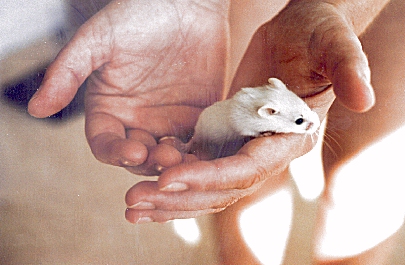
|
|

